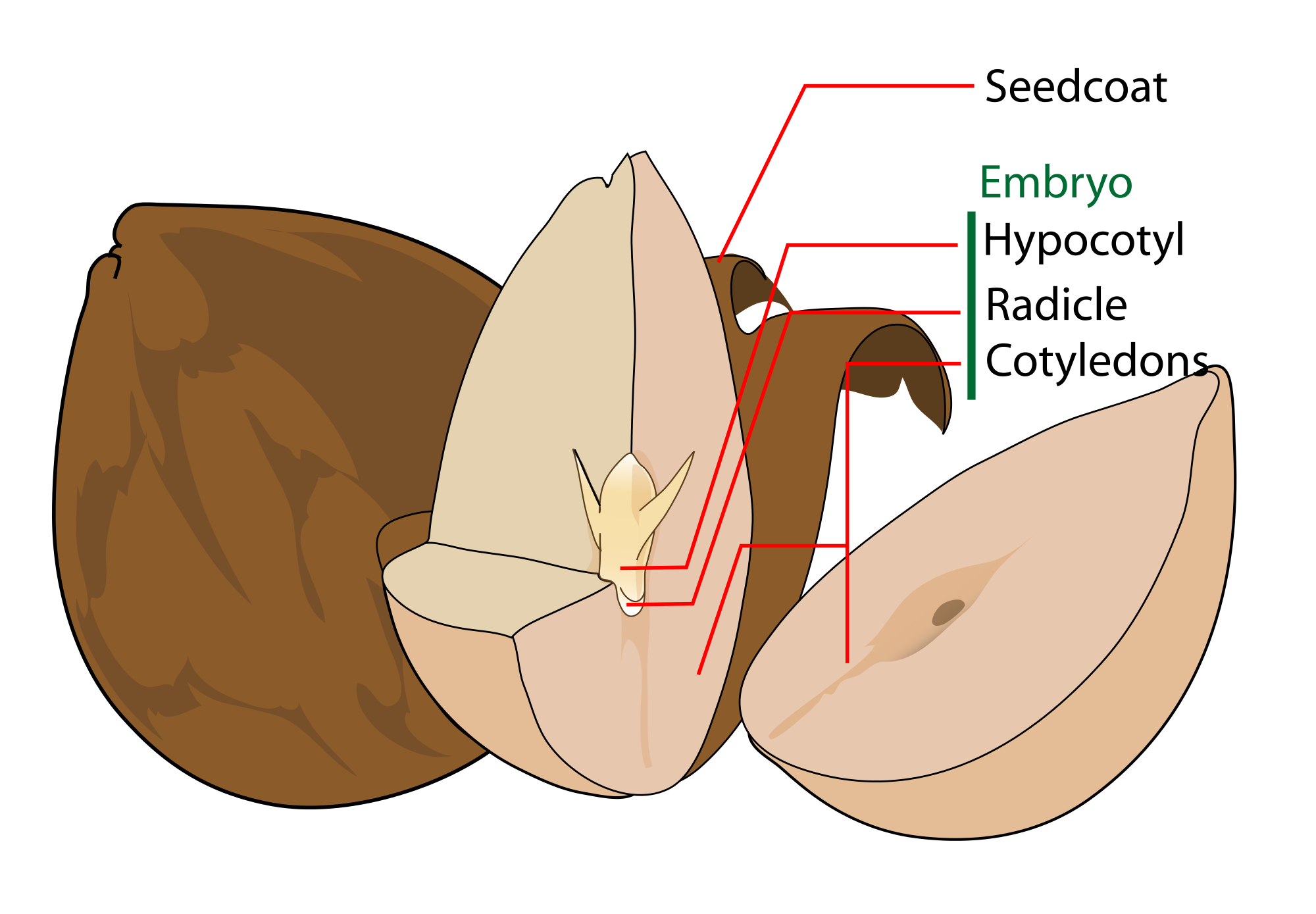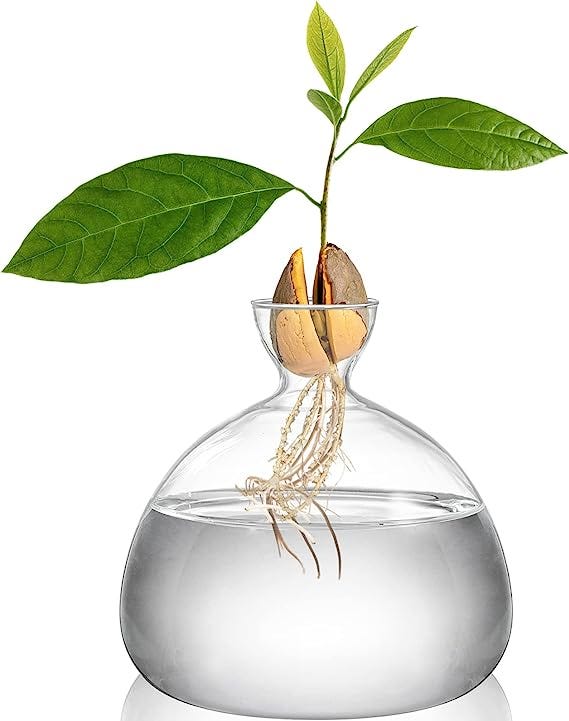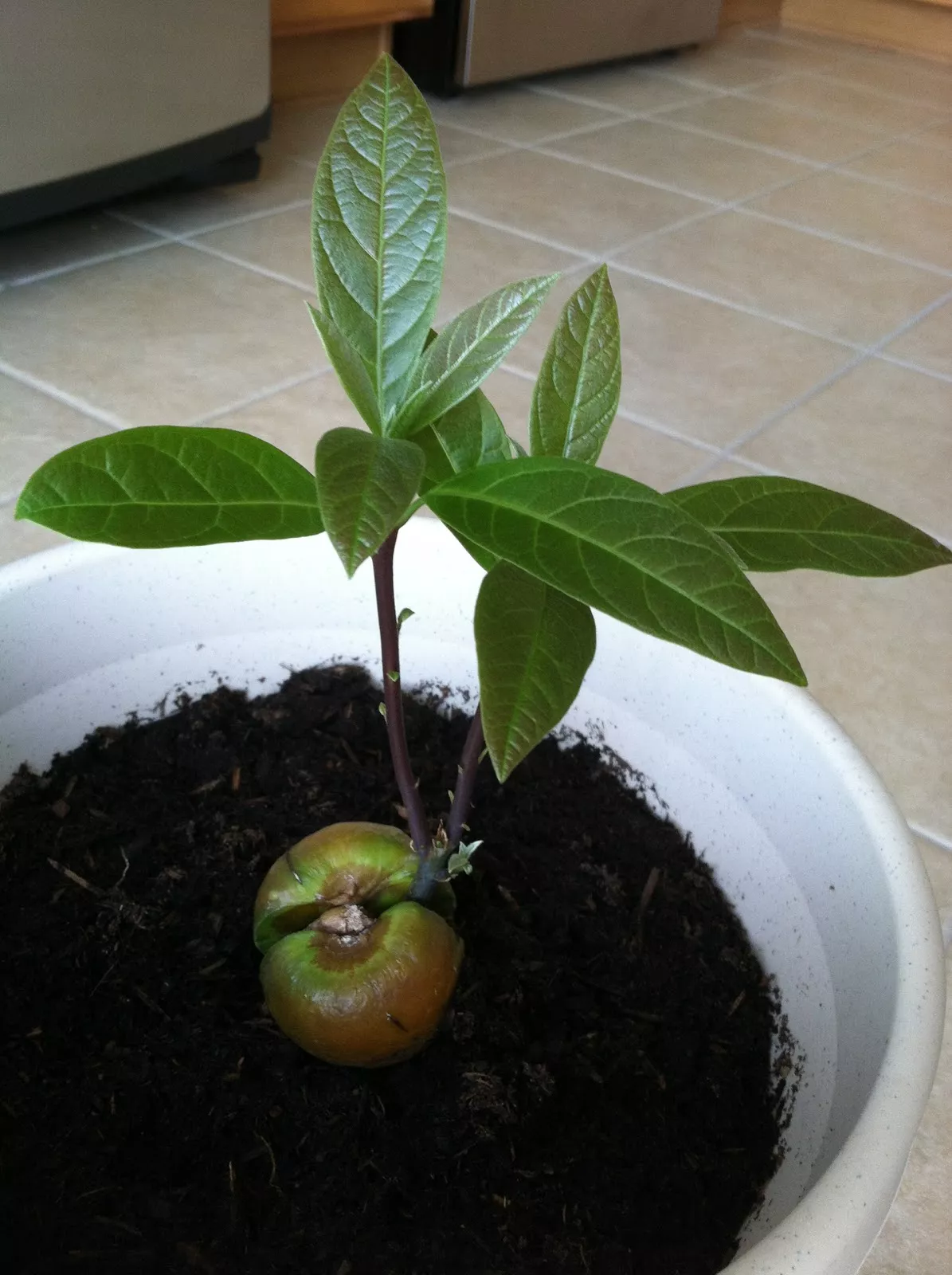Growing an avocado tree from seed is simple and rewarding. It requires patience, sunlight, and proper care.
Avocado trees can transform your home into a green oasis. This journey begins with a single seed, often found in the fruit you enjoy. Follow these steps to cultivate your own tree. First, remove the seed and clean it. Next, suspend it in water using toothpicks, ensuring the bottom half is submerged.
Place it in a sunny spot and wait for roots to sprout. Once the roots are established, plant the seed in soil. With regular watering and sunlight, your avocado tree will flourish. This process not only produces a beautiful plant but also offers the satisfaction of growing your own food.
Introduction To Avocado Growing
Welcome to the exciting world of avocado growing. Imagine picking fresh avocados from your backyard. This guide will help you start your own avocado tree from a seed.
Why Grow Avocados?
Growing avocados at home offers many benefits. Here are a few reasons:
- Fresh and Organic: Homegrown avocados are free from chemicals.
- Cost-Effective: Save money by growing your own fruits.
- Educational: Learn about plant life cycles and gardening.
- Fun Activity: Enjoy a rewarding hobby with your family.
Benefits Of Homegrown Avocados
Homegrown avocados provide numerous health benefits. Let’s explore some of them:
| Benefit | Description |
|---|---|
| Rich in Nutrients | Avocados are packed with vitamins and minerals. |
| Heart Health | They contain healthy fats that support heart health. |
| Skin and Hair | Avocados improve skin and hair health. |
| Weight Management | They help in maintaining a healthy weight. |
Starting your avocado adventure is simple. Gather a few supplies and a lot of patience. Soon, you will enjoy the fruits of your labor.
Choosing The Right Avocado Seed
Starting an avocado tree from seed can be an exciting journey. The first step is choosing the right avocado seed. The seed you select will determine the success of your avocado adventure.
Types Of Avocado Seeds
There are three main types of avocado seeds:
- Hass: The most popular type, known for its rich flavor.
- Fuerte: Known for its smooth, creamy texture.
- Bacon: A cold-hardy variety with a milder taste.
Each type of seed has unique characteristics. Hass is a favorite for its taste. Fuerte offers a different texture. Bacon is great for colder climates.
Selecting A Healthy Seed
Choosing a healthy seed is crucial for growing a strong avocado tree. Follow these tips to select the best seed:
- Choose a ripe avocado: The avocado should be soft to the touch.
- Inspect the seed: Look for any cracks or discoloration.
- Size matters: Larger seeds have a higher success rate.
Make sure the seed is clean and free from damage. A healthy seed will increase your chances of success.
Here’s a quick guide to help you:
| Criteria | Details |
|---|---|
| Ripe Avocado | Soft to the touch |
| Seed Condition | No cracks or discoloration |
| Seed Size | Larger is better |
By following these guidelines, you can ensure the best start for your avocado tree. Enjoy your avocado adventure!
Preparing The Seed For Planting
Starting your own avocado tree from seed can be a fun and rewarding experience. Before you begin, it’s essential to prepare the seed properly. This ensures that your avocado has the best chance to sprout and grow. Below are the steps you need to follow to prepare the seed for planting.
Cleaning The Seed
First, remove the avocado seed from the fruit. Gently rinse the seed under lukewarm water. Use your fingers to remove any remaining fruit pulp. Be careful not to damage the brown skin covering the seed. This skin protects the seed and is essential for growth.
For a thorough clean, you can use a soft brush. Make sure to clean all areas of the seed. Avoid using any soaps or chemicals. These can harm the seed and prevent it from sprouting.
Drying The Seed
After cleaning, the seed needs to dry. Place it on a paper towel. Leave it in a warm, dry place for 24 to 48 hours. This drying period helps the seed to heal any small wounds.
Do not place the seed in direct sunlight. This can cause it to dry out too much. A well-ventilated area indoors is ideal.
Once the seed is dry, it is ready for the next steps in planting. Follow these simple steps to set the stage for a thriving avocado tree.

Credit: www.bobsmarket.com
Starting The Germination Process
Starting the germination process of an avocado seed is an exciting journey. You can choose between two popular methods: Water Germination and Soil Germination. Each method has its benefits and steps to follow. Let’s explore these methods and learn how to grow an avocado tree from a seed.
Water Germination Method
The Water Germination Method is simple and fun. Follow these steps to start:
- Remove the seed from a ripe avocado.
- Clean the seed using water.
- Identify the top and bottom of the seed.
- Insert three toothpicks into the seed’s sides.
- Place the seed over a glass of water. The bottom should touch the water.
| Step | Description |
|---|---|
| Cleaning | Rinse the seed thoroughly to remove any flesh. |
| Positioning | Ensure the pointed end faces up. |
| Water Level | Keep the bottom half submerged in water. |
Change the water every few days to prevent mold. In 2-6 weeks, you will see a root and a shoot appear.
Soil Germination Method
The Soil Germination Method involves planting the seed directly in soil. Here’s how:
- Remove and clean the seed.
- Fill a small pot with rich, well-draining soil.
- Place the seed in the soil with the top part exposed.
- Water the soil lightly.
Keep the soil moist but not soaked. Place the pot in a warm, sunny spot. In about 2-8 weeks, you will see a sprout.
Both methods are effective in growing an avocado tree. Choose the one that suits your environment and enjoy your avocado adventure!
Planting The Germinated Seed
Growing an avocado tree from seed is a delightful journey. Once your seed has germinated, it’s time to plant it. This step is crucial for your avocado plant’s healthy growth.
Choosing The Right Pot
The pot you choose matters. It should have drainage holes to prevent waterlogging. A terracotta pot is ideal because it allows air to reach the roots.
| Pot Size | Reason |
|---|---|
| 6-8 inches in diameter | Enough space for roots to grow |
| 8-10 inches deep | Prevents roots from becoming crowded |
Planting Techniques
Start by filling the pot with a well-draining potting mix. Leave a few inches at the top.
- Place the germinated seed in the center of the pot.
- Ensure the top half of the seed remains above the soil.
- Fill the pot with soil, leaving the top of the seed exposed.
- Water the soil thoroughly until water drains from the bottom.
Keep the pot in a sunny spot. Ensure it gets at least six hours of sunlight daily. Water the soil regularly, keeping it moist but not soggy.
As your avocado tree grows, you may need to transplant it into a larger pot. This allows the roots to expand and supports healthy growth.
Caring For Your Avocado Tree
Once you’ve successfully sprouted your avocado seed, it’s time to nurture it. Caring for your avocado tree involves attention to its watering, fertilization, and general well-being. Here’s a detailed guide to keep your avocado tree thriving.
Watering Guidelines
Watering is crucial for your avocado tree’s health. Young trees need consistent moisture. But avoid waterlogging the soil. Here’s a simple watering schedule:
| Tree Age | Watering Frequency |
|---|---|
| 0-6 months | Every 3-4 days |
| 6 months – 1 year | Every 4-5 days |
| 1 year and older | Weekly |
Check soil moisture before watering. Insert your finger into the soil up to 2 inches. If it feels dry, it’s time to water.
Fertilizing Tips
Fertilizing ensures your avocado tree gets the nutrients it needs. Use a balanced fertilizer, high in nitrogen. Here are some tips:
- First Year: Use a balanced, water-soluble fertilizer every 1-2 months.
- Second Year: Increase to every 2-3 months.
- Mature Trees: Fertilize three times a year, in spring, summer, and fall.
Avoid over-fertilizing. Excess nutrients can harm your tree. Always follow the manufacturer’s instructions on the fertilizer package.
Managing Pests And Diseases
Growing an avocado tree from seed is a thrilling experience. But, your tree might face pests and diseases. Proper management keeps your tree healthy and thriving.
Common Pests
Avocado trees attract various pests that can harm the plant. Here are the most common ones:
- Spider Mites: These tiny pests suck sap from leaves. This causes yellow spots and leaf drop.
- Scale Insects: Scale insects attach themselves to stems and leaves. They suck sap, weakening the plant.
- Thrips: Thrips feed on flowers and young leaves. They cause deformed leaves and reduce fruit production.
To manage these pests, you can use natural predators like ladybugs. Also, insecticidal soaps are effective. Regularly inspect your tree for signs of pests.
Preventing Diseases
Diseases can affect the health of your avocado tree. Here are some common diseases and prevention tips:
| Disease | Symptoms | Prevention |
|---|---|---|
| Root Rot | Yellowing leaves, root decay | Ensure proper drainage |
| Anthracnose | Dark spots on fruits and leaves | Prune infected parts, use fungicides |
| Powdery Mildew | White powder on leaves | Increase air circulation, avoid overhead watering |
Keep the area around your tree clean. Remove fallen leaves and fruits. Use well-draining soil and avoid overwatering. Inspect your tree regularly to catch diseases early.

Credit: medium.com
Harvesting Avocados
After months of patiently nurturing your avocado tree, it’s time to enjoy the fruits of your labor. Harvesting avocados at the right moment ensures the best flavor and texture. Let’s dive into the key aspects of knowing when and how to harvest your avocados.
Signs Of Ripeness
To harvest avocados, you need to know the signs of ripeness. Here are some key indicators:
- Color Change: Many avocado varieties change color when ripe. For example, Hass avocados turn dark green or black.
- Firmness: Gently squeeze the avocado. A ripe one will yield slightly to pressure.
- Stem Test: Flick the small stem at the top. If it comes off easily and is green underneath, the avocado is ripe.
Harvesting Techniques
Proper harvesting techniques ensure you don’t damage the fruit or the tree. Follow these steps:
- Use a Sharp Tool: Use pruning shears or a knife to cut the avocado stem.
- Leave Some Stem: Leave a small part of the stem attached to the fruit. This helps it last longer.
- Handle with Care: Place the harvested avocados gently in a basket to avoid bruising.
| Technique | Purpose |
|---|---|
| Sharp Tool | Prevents damage to the fruit |
| Leave Stem | Prolongs freshness |
| Handle with Care | Avoids bruising |
With these tips, you can enjoy your home-grown avocados at their best!
Maintaining A Healthy Tree
Growing an avocado tree from seed is a rewarding experience. Ensuring your tree stays healthy is key to success. This section will cover essential tips for maintaining a thriving avocado tree.
Pruning Tips
Pruning helps your avocado tree grow strong. Trim the tips of the branches to encourage bushier growth. Remove dead or damaged branches regularly. This helps the tree focus its energy on healthy parts. Use clean, sharp tools to avoid infections.
Prune in the spring or early summer. This gives the tree time to heal before winter. Be careful not to over-prune. Removing too much can stress the tree. Aim to keep the tree open to sunlight and air.
Long-term Care
Long-term care is vital for a healthy avocado tree. Water the tree deeply but infrequently. Allow the soil to dry out slightly between waterings. Overwatering can lead to root rot.
Feed your tree with a balanced fertilizer. Do this every three months for best results. Choose a fertilizer high in nitrogen for leafy growth. Mulch around the base to retain moisture and regulate soil temperature.
Protect your tree from pests and diseases. Check for signs of infestation regularly. Treat with natural or chemical solutions as needed. Monitor the tree’s growth and adjust care practices accordingly.
| Task | Frequency | Notes |
|---|---|---|
| Prune | Spring/Summer | Use clean, sharp tools |
| Water | Weekly | Allow soil to dry slightly |
| Fertilize | Every 3 months | Use high nitrogen fertilizer |
| Mulch | As needed | Helps retain moisture |
| Check for Pests | Monthly | Treat as needed |

Credit: saltnsprinkles.com
Frequently Asked Questions
How Do You Start An Avocado Seed?
To start an avocado seed, remove it from the fruit, clean it, and insert toothpicks. Suspend it over water, half-submerged. Place it in a sunny spot.
How Long Does An Avocado Seed Take To Sprout?
An avocado seed typically takes 2-6 weeks to sprout. Patience is key. Ensure it has enough sunlight and water.
What Type Of Soil Is Best For Avocado Trees?
Avocado trees prefer well-draining, sandy soil. Ensure the soil is slightly acidic to neutral for optimal growth.
How Often Should You Water An Avocado Seedling?
Water your avocado seedling every few days. The soil should be moist but not waterlogged. Adjust based on the environment.
Conclusion
Cultivating an avocado tree from seed is a rewarding journey. With patience and care, you can enjoy fresh avocados. Follow these simple steps and watch your tree thrive. Enjoy the satisfaction of growing your own fruit. Happy gardening and may your avocado adventure be fruitful and fun!



